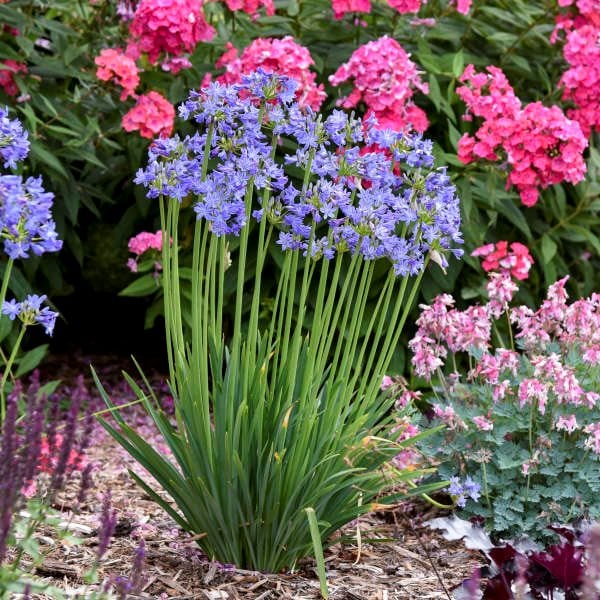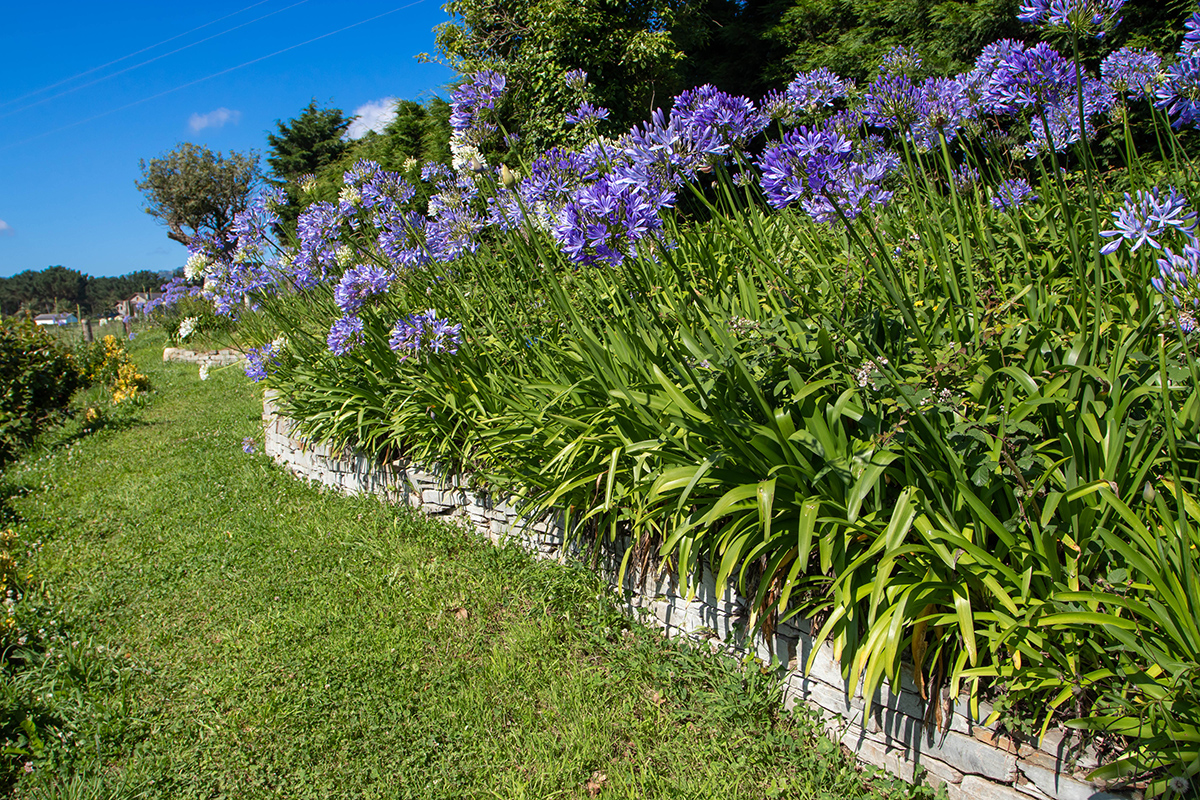Unleashing the Secret to Effective Agapanthus Farming: Tips and Techniques for a Flourishing Yard
In the world of horticulture, growing agapanthus successfully calls for a critical technique that encompasses numerous facets of plant care. With mindful focus to information, one can unlock the secrets to supporting these stunning blossoms, leading to a yard that prospers with beauty and vibrancy. By comprehending the subtleties of agapanthus cultivation, one can develop an atmosphere where these plants prosper and bloom generously. In the adhering to conversation, we will certainly check out important pointers and methods that will guide you in the direction of a flourishing agapanthus yard, using understandings right into ideal techniques, dirt problems, sprinkling methods, and much more.
Planting Agapanthus: Ideal Practices
When planting Agapanthus, correct dirt prep work is important for guaranteeing effective growth and advancement of these attractive flowers. Agapanthus, generally referred to as Lily of the Nile or African lily, grows in well-draining soil with a somewhat acidic to neutral pH level - Agapanthus. Before growing, it is crucial to modify heavy clay dirts with organic matter such as garden compost or peat moss to boost water drainage and give essential nutrients for the plants
To grow Agapanthus, choose an area that obtains complete sunlight to partial shade, as this will certainly advertise healthy and balanced development and bountiful flowering. Dig an opening two times the size of the plant's root ball and position the Agapanthus at the same depth it was previously growing. Carefully backfill the opening with soil, pressing down firmly to get rid of any air pockets around the roots.
Water the freshly planted Agapanthus extensively and proceed to keep the dirt equally wet, specifically throughout the plant's energetic growing period. Agapanthus. Applying a balanced plant food once a month can further support the plant's development and flowering. By following these finest methods for growing Agapanthus, you can produce a stunning screen of these captivating flowers in your garden
Suitable Soil Issues for Agapanthus
For ideal development and flowering success of Agapanthus plants, making certain the dirt problems are suitable is critical. Agapanthus flourishes in well-draining dirt with a somewhat acidic to neutral pH degree varying from 6.0 to 7.0. This sort of soil enables ample water drain, protecting against waterlogging which can lead to root rot. To enhance soil drainage, think about adding organic issue such as garden compost or peat moss when preparing the growing website. Furthermore, Agapanthus chooses dirt that is abundant in nutrients, so incorporating a well balanced fertilizer during the growing period can advertise healthy and balanced growth and lively flowers.

Watering and Feeding Tips
To guarantee healthy and balanced growth and lively blossoms, correct watering and feeding techniques are essential for successful Agapanthus farming. Agapanthus plants profit from normal watering, especially during the growing season.
When it involves fertilizing Agapanthus, a well balanced fertilizer with equal parts nitrogen, phosphorus, and potassium can be applied in the springtime to advertise healthy and balanced development and blooming. Slow-release plant foods are excellent for providing nutrients gradually over an extensive duration. Stay clear of over-fertilizing, as this can lead to too much vegetation growth at the expense of blossoms.
In addition, incorporating raw material like compost into the soil can enhance nutrient degrees and enhance dirt structure, assisting in the total health and wellness of the Agapanthus plants. By following these watering and feeding pointers, garden enthusiasts can ensure their Agapanthus plants prosper and generate stunning displays of blossoms.
Pruning and Deadheading Methods
Correct trimming and deadheading techniques play an essential function in preserving the health and visual appeals of Agapanthus plants, matching the necessary methods of watering and feeding for effective growing. Pruning Agapanthus includes getting rid of spent flower heads, dead or yellowing leaves, and total shaping of the plant to promote better development. Deadheading, the procedure of removing faded blossoms, not just boosts the plant's look but additionally motivates further blooming.
When deadheading Agapanthus, it is suggested to snip off the blossom stem at the base making use of sharp, clean shears. This process reroutes the plant's energy from seed manufacturing back right into root and vegetation growth, advertising a healthier and more durable plant. Routine deadheading can expand the blooming period of Agapanthus and protect against self-seeding, which can cause congestion.
In terms of pruning, Agapanthus typically advantages from a light trim after blooming to clean up the plant and encourage fresh growth. Reducing back the spent blossom stems and eliminating any dead or damaged foliage aids maintain the plant's vitality and overall appearance. Nevertheless, it is vital to avoid reducing right into the crown of the plant, as this can compromise its wellness.

Protecting Agapanthus From Pests and Diseases
Implementing effective parasite and illness management techniques is essential to guarding the health and wellness and vitality of Agapanthus plants in growing. One usual parasite that influences Agapanthus is the Agapanthus borer, a caterpillar that passages right into the plant, creating damage to the leaves and flowers.
In enhancement to pests, Agapanthus are susceptible to diseases such as origin rot and fungal fallen leave places. By staying attentive and resolving parasite and illness issues quickly, gardeners can assist their Agapanthus flourish and flourish.

Verdict
To conclude, effective cultivation of agapanthus calls for proper growing techniques, ideal dirt problems, sufficient watering and feeding, see this page regular pruning and deadheading, and security from conditions and pests. By following these tips and techniques, garden enthusiasts can ensure a growing garden filled up with attractive agapanthus blooms. Agapanthus. Bear in mind to maintain consistent care and focus to information to promote the health and wellness and longevity of these sensational plants
When growing Agapanthus, correct soil preparation is vital for making certain successful growth and advancement of these lovely blossoms.Water the freshly planted Agapanthus thoroughly and continue to keep the soil evenly moist, particularly during the plant's active growing period.For optimum growth and blooming success of Agapanthus plants, guaranteeing the soil conditions are ideal is essential. When planting or transplanting Agapanthus, make certain the dirt is why not try this out well-prepared to give the essential structure for the plants to establish themselves successfully. One common pest that affects Agapanthus is the Agapanthus borer, a caterpillar that tunnels into the plant, creating damage to the leaves and flowers.